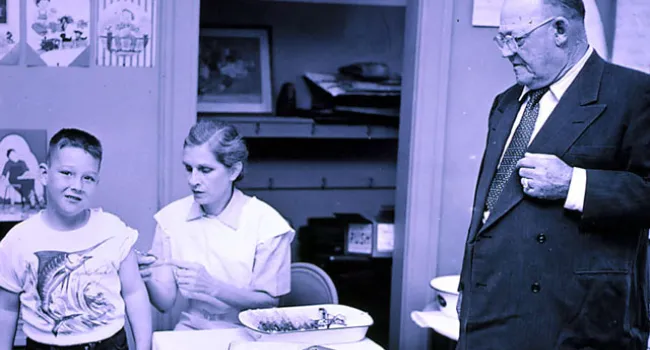
Slowly, South Carolina witnessed the rebirth of a two-party system in the 1960s and 1970s. In 1964, the state voted against a southern Democratic candidate, Texan Lyndon B. Johnson, and instead cast its electoral college votes for Republican Barry Goldwater. In that election year, as illustrated in this cartoon, Strom Thurmond, a U.S. Senator since 1954, announced his decision to leave the Democratic Party for the Republican.
Courtesy of the South Caroliniana Library.
Standards
- 5.4.CE Analyze the causes and impacts of social movements in the U.S. and South Carolina.
- This indicator was designed to foster inquiry into the role of South Carolina in the Modern Civil Rights Movement, to include the influence of court cases such as Briggs v. Elliot and Flemming v. South Carolina Electric and Gas. This indicator was also developed to promote inquiry into the relationship between national leadership, protests, and events and South Carolina leadership, protests and events, such as the Friendship Nine and the Orangeburg Massacre.
- 8.5.E Utilize a variety of primary and secondary sources to analyze multiple perspectives on the cultural changes in South Carolina and the U.S.











